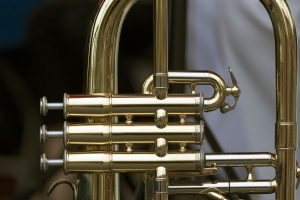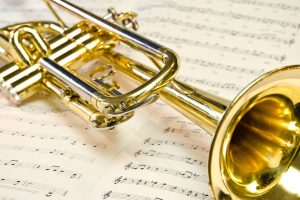The history of the trumpet dates back to around the 1880s, when they were used by the army to entertain troops during war. Apart from that, they were used as a means of communication before the introduction of wireless communications.
Today, there are many types of small trumpet available on the market. Pocket trumpets have been categorized into various classes, depending on the materials used to mold them, the type of tunes they can deliver and, of course, the price.
The topic of playing the trumpet is vast and wide. Some people think that it’s easy, while others treat it as if it was rocket science, where you have to spend countless time trying to master the operation.
In my opinion, the question of whether it’s hard or easy to play the trumpet depends on you as a person. The best way to go about it is to take a music course, whether online or at school, if you really want to become a professional. In this article, we will review some essential points which will help you get started in the trumpeting arena.
Pick a trumpet
The first step to think of when looking to play your first pocket trumpet is to buy one. Most newcomers to trumpeting have a lot of problems when purchasing their first small trumpet.
This is because there are so many trumpets on the market to choose from, making it extremely difficult to make a selection. According to professional tutors, the best trumpets for students are those in the B flat key.
When shopping for a first pocket trumpet, always check the price. Since trumpets are quite expensive, it’s recommended that you choose an inexpensive trumpet from an unmarked brand,as it is intended for a student. Alternatively, you can choose to rent a pocket trumpet instead of spending money on buying one.
Finally, it’s very important that you check your trumpet before buying. Always check the bell to ensure that it doesn’t have any dents and check the valves to ensure that they move freely without sticking.
Practice without a trumpet
Although this seems strange, it’s the first step towards becoming a professional trumpeter. Practicing without the trumpet allows you to position your lips as you prepare them to play the trumpet. When practicing, always pretend there’s a small piece of paper at the tip of your tongue.
Now pretend that you’re scraping the piece of paper from your tongue and spitting it away. Your lips are supposed to make a buzzing noise which is needed when playing a trumpet.
You may play the trumpet now
Since you’ve practiced how to position your lips when playing a trumpet, it’s now time to play the proper instrument.
Inhale air through your mouth, then place your lips right on the mouthpiece. When blowing, you can start practicing how to touch the valves to achieve different notes.
Note that the valves are numbered one, two and three in ascending order from the mouthpiece towards the bell. You can use a trumpet finger chart or you can simply press down the valves as you search for the perfect note.
Playing a scale
At this point now, you’re learning how to play the trumpet to deliver outstanding notes at proper intervals. You can either play the notes in ascending or descending order.
The first note we will learn is C. The C note is achieved when you blow your pocket trumpet without touching the valves.
The second note we’ll look at is D. This note is played when the first and third valves are pushed at the same time.
Next, is the E note. When playing E, push the first two valves while still tightening your lips.
Next you have the F note. When playing this note, only push the first valve while still tightening your lips.
The G is quite similar to C. The only difference with these two notes is that with G, you’ll have to tighten your lips even more than for C.
If you tighten your lips even more, then press the first two valves, you’ll be playing an A.
For the B note, you’ll have to tighten your lips then press down the second valve.
Getting better
Now that you know what should be done to achieve a particular note, it’s time to practice and make things better. Always spend at list 30 minutes to an hour everyday to practice how to play the different notes.
Try to memorize the action of the valves and how to combine them to achieve a particular note. Through doing this, you’ll notice that you’ll start mastering the valves and eventually, you’ll become one of those smart trumpeters who can easily entertain people in a jazz band or orchestra.









